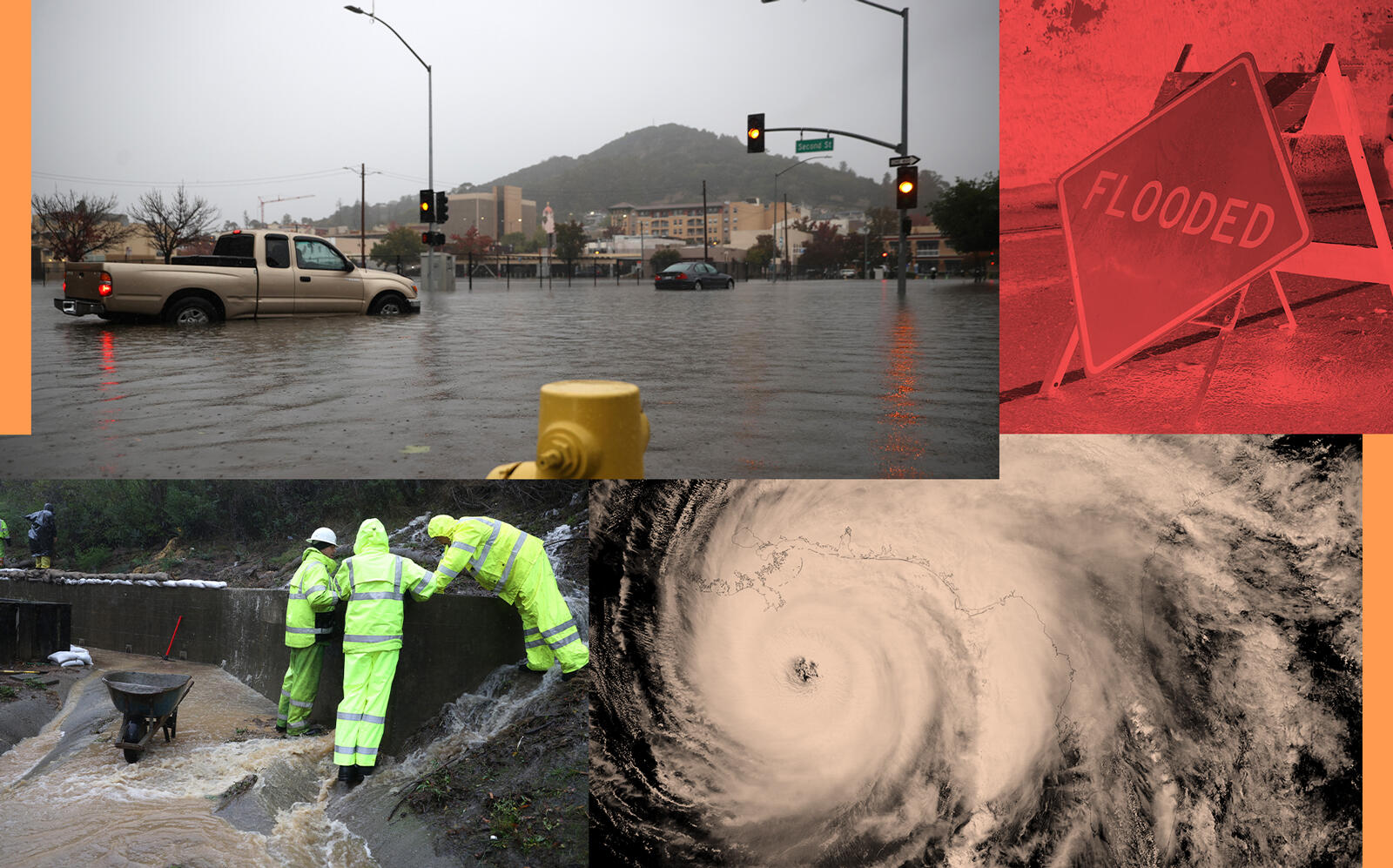Trending
SF “bomb cyclone” may be foretaste of storms driving up housing, insurance costs
“Atmospheric rivers” like this cost the state over $1 billion annually, likely to worsen with climate change

Add “bomb cyclone” to a lengthening list of California climate-change catastrophes that threaten to drive up housing and insurance costs.
So-called Category 5 atmospheric rivers like the one that hit the Bay Area this weekend cause hundreds of millions of dollars in damages, according to a 2019 report published in Science Advances. They’ll get “wetter, longer and wider” in a warmer climate, causing annual damages as high as $1.1 billion, according to the report.
It was by far the biggest storm in any October for San Francisco, where the rainy system typically starts in November. Downtown recorded just over 4 inches of rain, 60 percent higher than the previous record in 2009 and the fourth wettest day ever in the city, which has records going back to the Gold Rush, according to the National Weather Service.
Tallying our climate numbers. Looks like 4.02 inches of rain for the calendar day in downtown SF. By far the wettest Oct day ever (old record 2.48 inches 10/13/09). 4th Wettest day EVER in SF with records back to Gold Rush. #AtmosphericRiver pic.twitter.com/JwlmhviJOC
— NWS Bay Area (@NWSBayArea) October 25, 2021
While costs haven’t yet been totalled, streets flooded, scaffolding came crashing down at a SoMa construction site and residents were evacuated near a 100-year-old tree that was in danger of toppling in Golden Gate Heights. PG&E reported almost 60,000 customers without power on Monday morning in the Bay Area, most of them in the North Bay and on the Peninsula. Flooding prompted closures on highways I-280 in San Francisco and I-880 in Fremont.
The NWS said winds topped 90 miles an hour with hurricane-force winds in Alameda. Sacramento got soaked by 5.4 inches of rain, or more than 80 percent of its drought-stricken 2020-2021 rainy season. Further east, the Sierras got more than two feet of snow.
The storm was particularly dangerous near the burn scar from the Dixie Fire, a few hours’ drive northeast of San Francisco, demonstrating how climate-related events can build upon one another. The July wildfire, which is 100 percent contained after the storm, burned nearly 1 million acres and laid the groundwork for multiple mudslides, bringing evacuation warnings and shutdown highways.
We captured add’l views of the Hwy 70 slide in Butte County about 8 mi N of Pulga from earlier today.
Storms are expected to continue overnight. Stay home, stay safe!
Before your Monday morning commute, get updates on road closures at https://t.co/WvicXhSbxn #KnowBeforeYouGo pic.twitter.com/lvTIGA4ro8
— Caltrans HQ (@CaltransHQ) October 25, 2021
Between the fires and the floods, more California insurance agents are trying to back out of policies in high risk areas. Rates are highly regulated at the state level, meaning non-renewals can be an insurance company’s go-to strategy rather than higher premiums.
At the end of 2019, insurers declined to renew almost 20,000 policies in the counties with the biggest concentration of homesat high risk to fire, according to a report from the California Department of Insurance. That’s a two-fold increase over the year before. Residential non-renewals statewide were up 31 percent in the same period.
Bay Area home values and construction costs have skyrocketed in recent years and many people haven’t updated their insurance policies to reflect the higher price of rebuilding. Brian Ferguson, spokesman for California’s Office of Emergency Services, told the Los Angeles Times just before the storm that many could be underinsured and “We are telling people that they need to be checking their coverage.”
The East Coast is hardly immune from climate-related storm damage, as shown by the recent flooding from Hurricane Ida. New York’s Emergency Management Department on Monday warned that at least two to four inches of rain tonight through Wednesday morning could bring flooding in low-lying areas and said travel may become dangerous.
Hurricanes transmit heat from the tropics to the poles, which is why they have also grown in intensity and frequency with warmer waters.
Atmospheric rivers are long and narrow weather systems saturated with water vapor — a bit like a river in the sky, although they can have up to 15 times the average flow of water at the mouth of the Mississippi River, according to the National Atmospheric and Oceanic Administration. The Bay Area storm was dubbed a “Pineapple Express” because its high winds brought moisture to the West Coast from Hawaii.
Some welcomed the dramatic early kickoff to the rainy season after years of drought statewide. The shift to floods directly from droughts may be something Californians need to adjust to in the years ahead.
“It is worth noting that this exact situation — an extremely strong atmospheric river bringing brief period of record rainfall in midst of severe and temperature-amplified drought — is what we expect to see in California with #climatechange,” tweeted UCLA climate scientist Daniel Swain.




